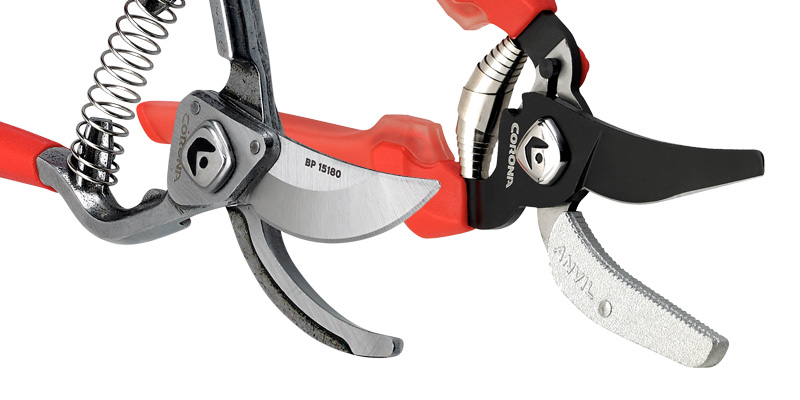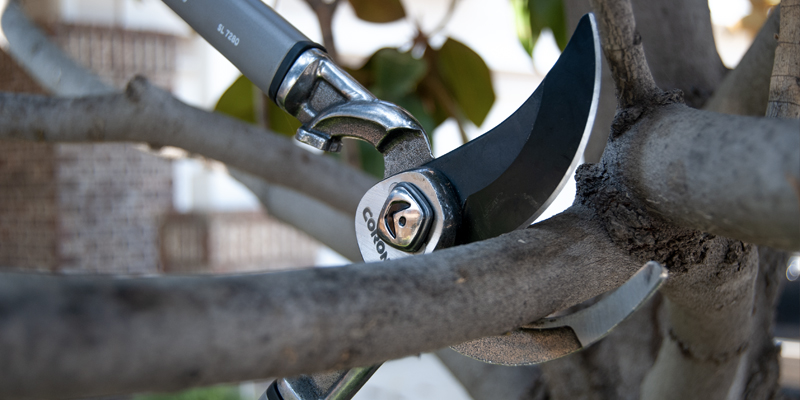One of the most challenging topics for many gardeners, whether new or experienced, is figuring out the right tool for the job. A common misconception is that one tool is good enough for all the pruning tasks necessary. This article is intended to set the record straight that one size does not fit all, particularly when it comes to using bypass pruners versus anvil pruners and using the right-size tool for your hand size.
The key takeaways from this article are that bypass pruning tools are ideal for pruning and cutting live green stems. They make the cleanest cuts, allowing the plant to properly heal and promoting new growth. Anvil pruning tools are specifically designed for hard deadwood and are capable of cutting through denser materials more easily. Read on to learn why these tools are not interchangeable. The article also covers how the size of your hand should help determine the size of the tools you use. Using the right pruning tool will be better for your plants, better for your tools, and most importantly, better for you!

Bypass Pruning Tools for Cutting Live Stems and Branches
Bypass tools have a beveled cutting edge that bypasses a noncutting hook that supports the branch when cutting. The beveled edge is sharpened, while the hook is flat and unsharpened. This helps the blade to easily pierce the branch or stem while leaving the remaining stem with a smooth, clean cut.

Anvil Pruning Tools for Cutting Hard Deadwood
Unlike a bypass blade, an anvil is sharped on both sides—similar to a “V” that can pierce the hard deadwood. The blade closes down onto a flat anvil, which typically has a narrow channel for the cutting blade to fit into. This helps keep the blade’s sharpened edge from smashing into the metal anvil, which could damage or dull the edges.

What Happens When Using the Wrong Tool
Knowing how the tools are designed and what their intended purposes are, you can start to see why one tool isn’t suited for all your pruning jobs. For example, using a bypass tool on hard deadwood can be plain disastrous on many levels.
Since the wood is hard and dense to cut, a gardener is likely to twist and torque the tool, causing the blade to cross over the wrong side of the hook. Not only will this kill your hands, but once the cut is made, the blade will come down on the hook rather than bypass it. The result will be a blade that is bent and out of alignment or a blade with a chipped edge. At worst, the blade could snap and potentially become a sharp projectile. Not only would you be out a good pruning tool, but this is considered misusing the tool, which voids the warranty and poses a serious risk of bodily injury to yourself.

Using an anvil pruning tool on a live stem or branch could likely crush it. The stem lies across the flat anvil surface and will often be crushed, leaving the remaining piece of the stem damaged. This type of cut will take more of the plant’s energy to recover from and will make the plant more susceptible to diseases and pests, which could ultimately kill it.
Do You REALLY Need Both?
It’s best to assess the job and bring the correct tool for the task. You wouldn’t use a screwdriver to hammer in a nail, so if your job is mostly cutting live stems and branches, a bypass blade is the way to go. If you are cutting out deadwood or harder, denser material like mesquite, reach for an anvil blade. Spending a little extra money on proper tools will ultimately save you from replacing your good tools or replacing a plant that didn’t survive due to a poor cut. Most importantly, it could save a visit to the emergency room if a blade snaps and injures you.
Size Does Matter
Understanding which type of cutting tools work best for the job is half the story. It’s equally important to select tools that fit your hand. Just because you need to cut a 1-inch branch doesn’t mean you should select a hand pruner with a 1-inch cutting capacity. Instead, opt for a tool that fits your hand that will let you easily make the cut. Using the proper-size hand pruner will provide greater control, comfort, and ability to make a cut. Moving up to loppers or hand saws will help make larger pruning jobs easier. For more information on how to measure your hand to find the right-size pruning tools, watch the video above with garden expert Melinda Myers, who sheds new light on choosing the right-size tool. For more information about the tools featured in this article and video, visit the Corona website.


















Comments
Log in or create an account to post a comment.
Sign up Log in